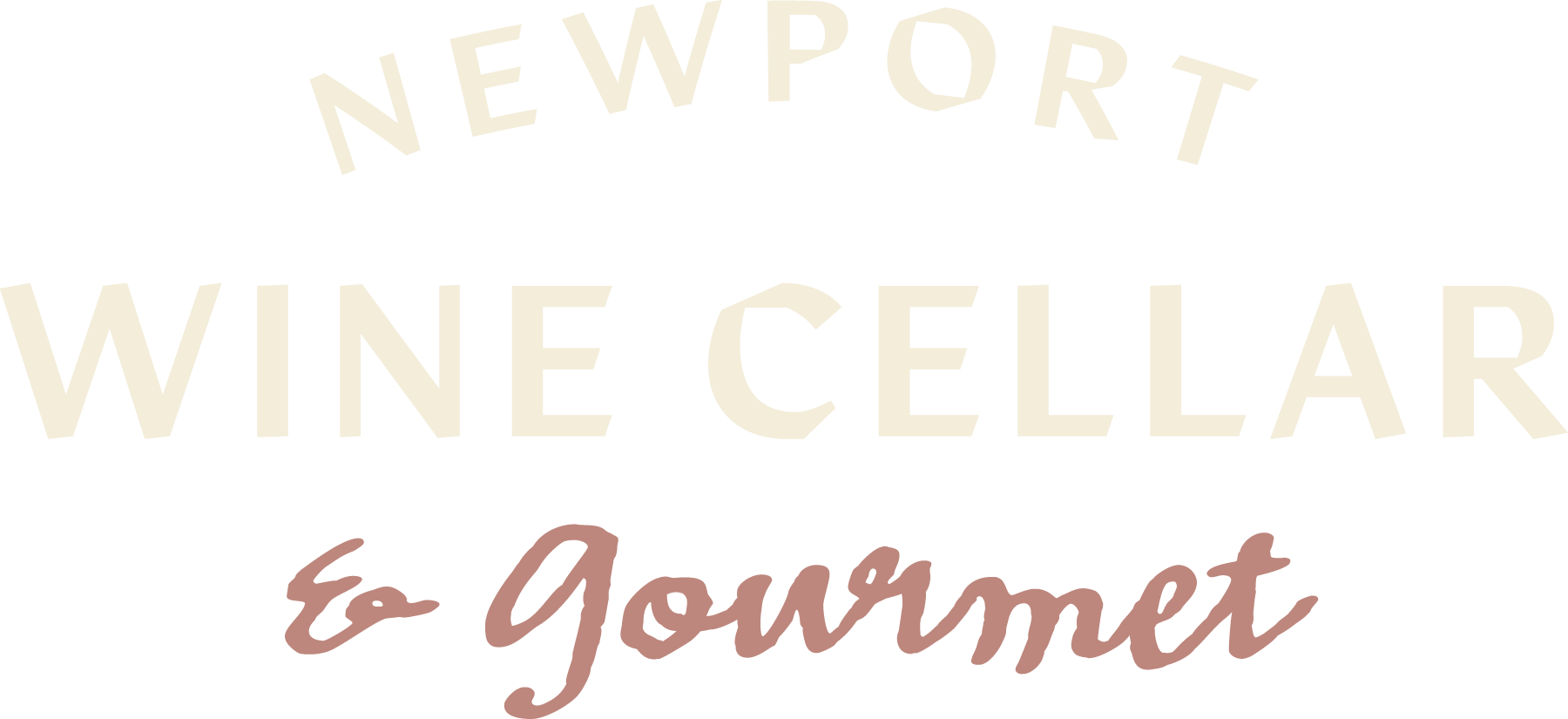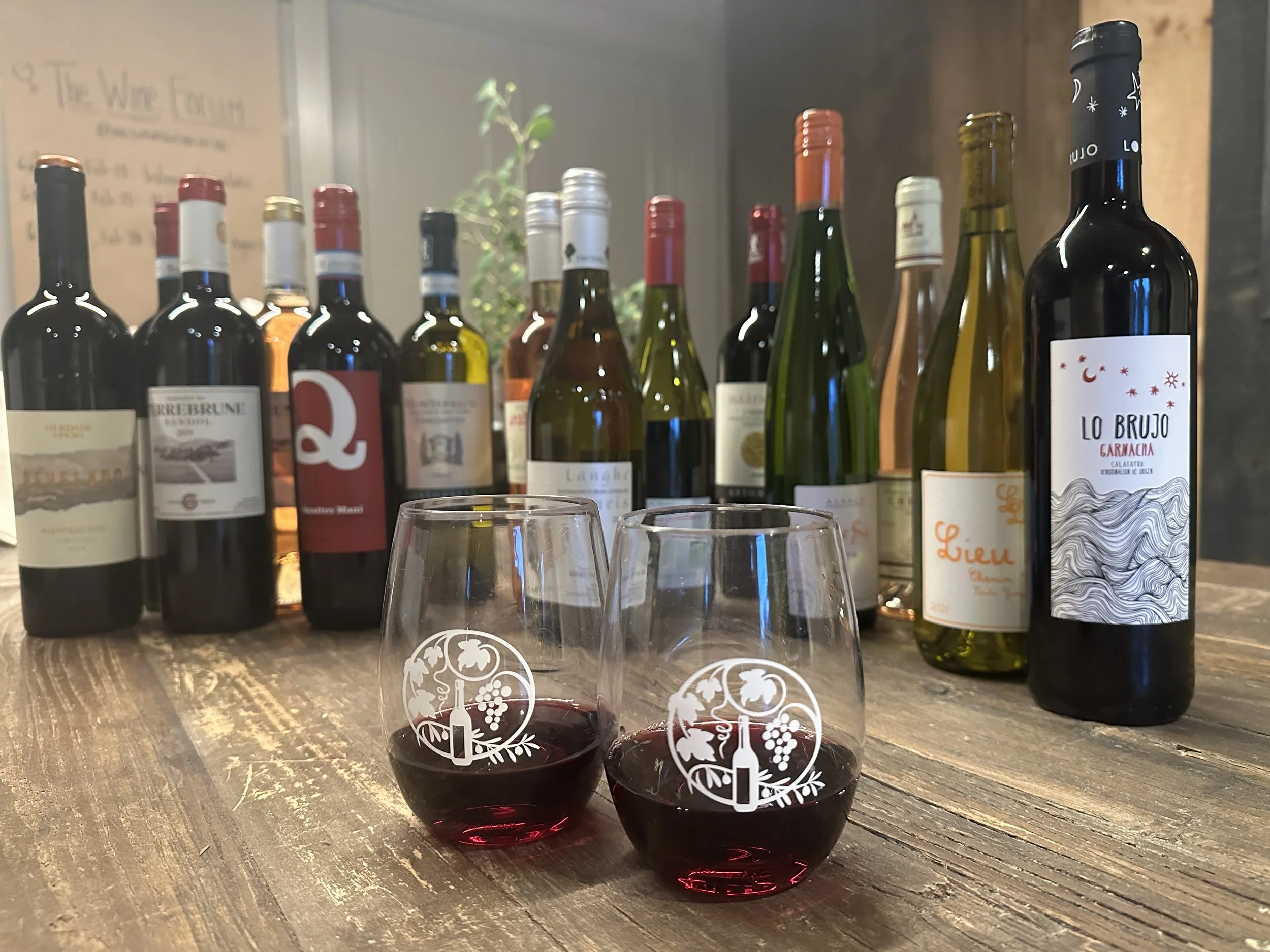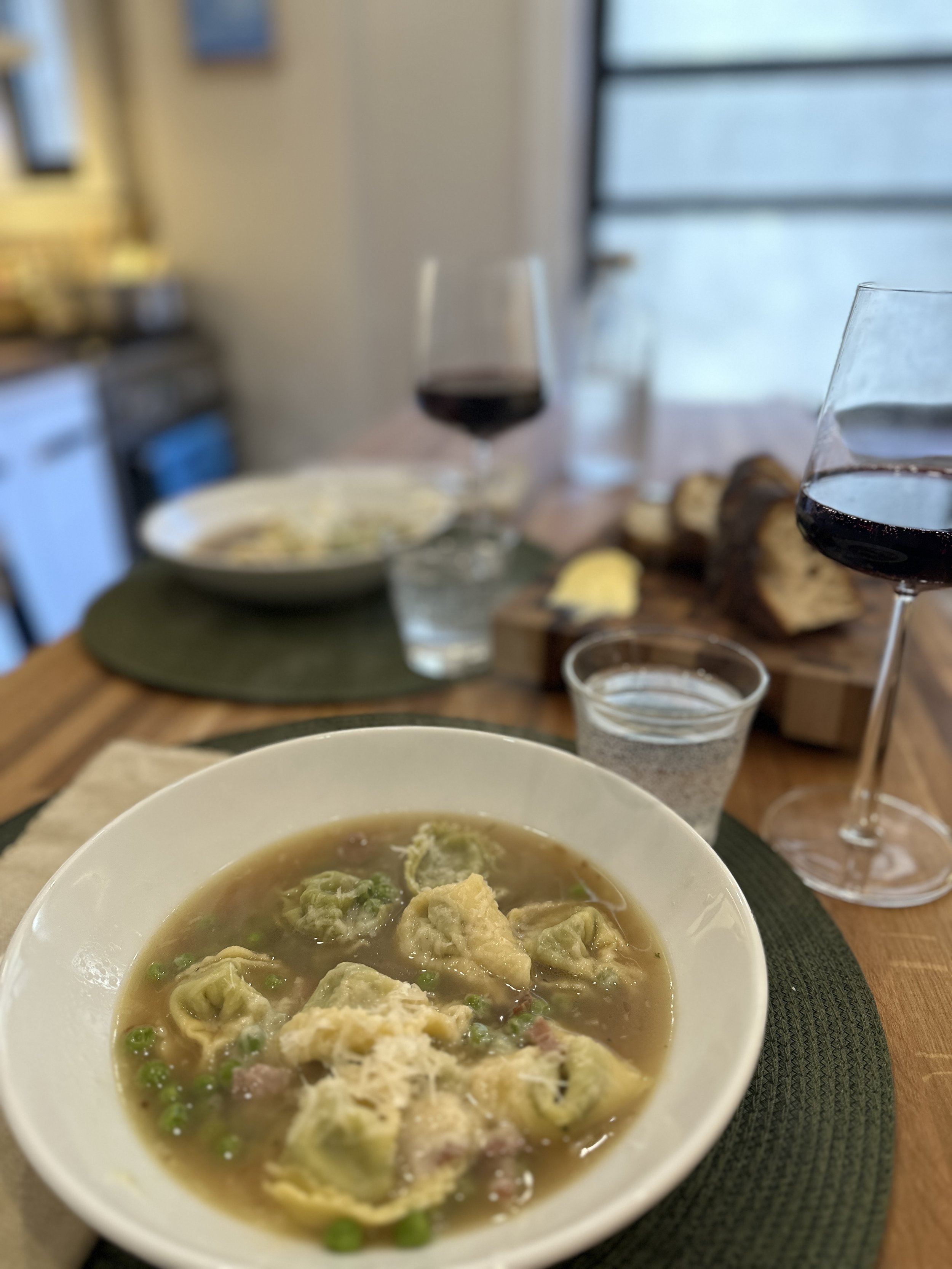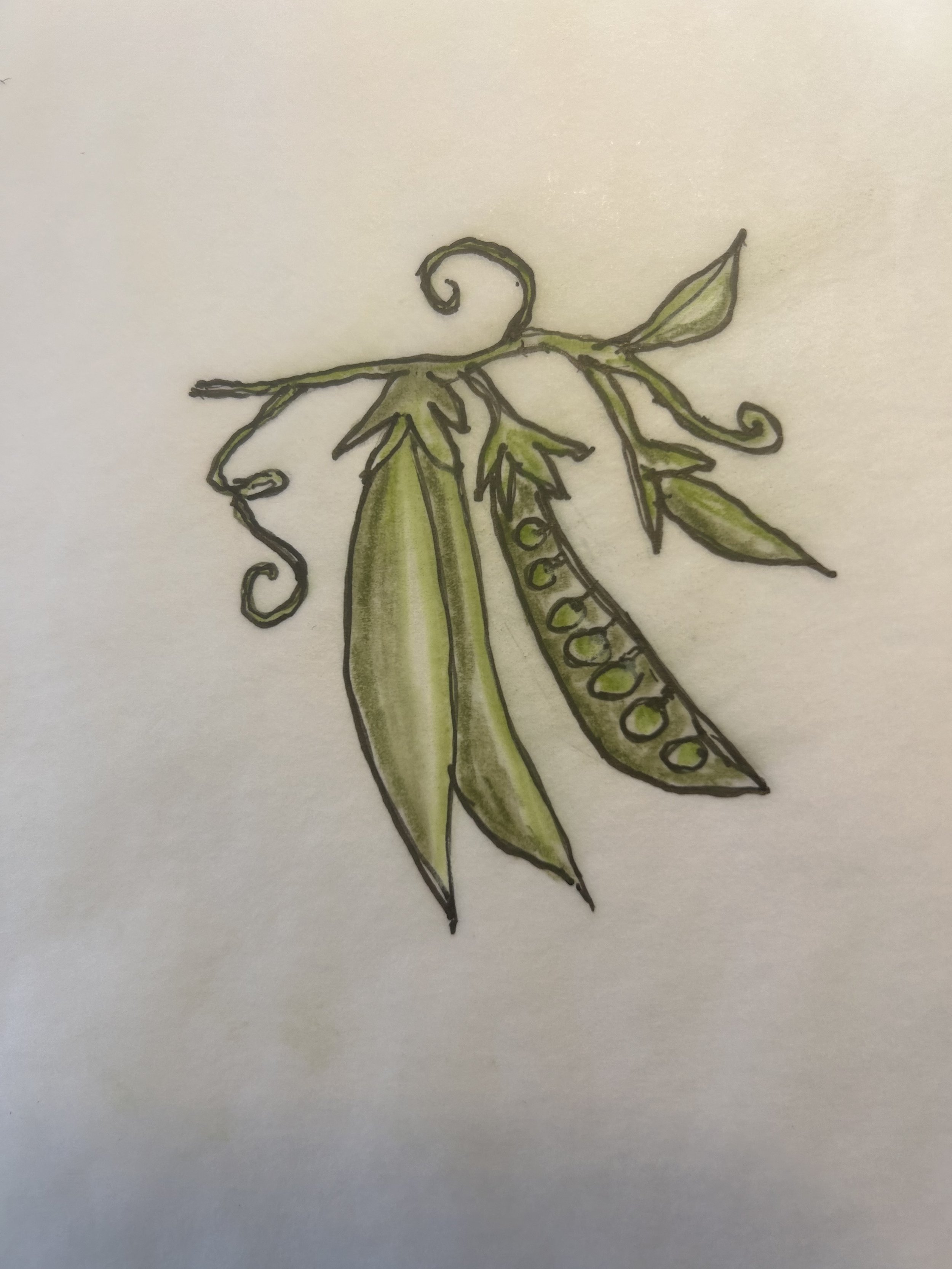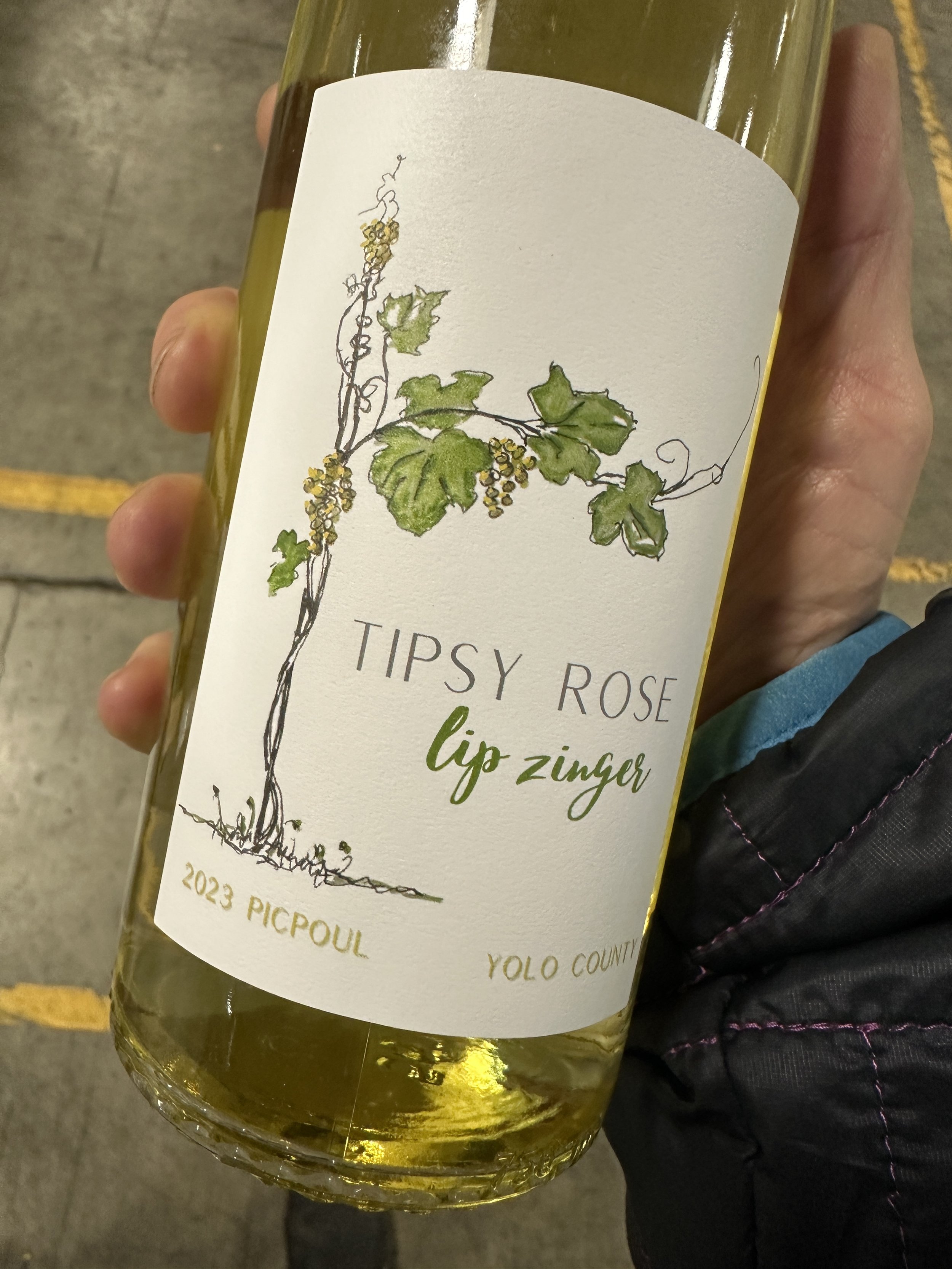Responsible Indulgence--February 2024
Pressed for Thought—February 2024
This new year is moving along at a clip and before we know it, we will be complaining about the summer heat, tourists, and the city planners' traffic schedule! How is it that each year arrives seemingly without warning and rushes by in a blink of the eye? Despite all the indicators that we have that actually do warn us, we are still surprised that “it is already February!” And, then it moves along faster that I can even focus my eyes on! It is exciting, in a way, and also a bit overwhelming. We have only just set the intentions for the year and it is already Ground Hog Day! The glue on my vision board hasn’t even dried yet, and it is February before I have even talked about my intentions for this year.
That said, the sunshine of late is a welcome change from January’s rainy days. While I know it is good for our water table to have the rain, I am happy for the warmth of the sun on my face. We have the good news that Punxsutawney Phil did not see his shadow, so an early spring it is! I know his accuracy rate hovers just under 40%, but he seems so trustworthy this year, so I have decided to forgive him for his past transgressions and put my faith in his prediction.
With early spring in mind, I made Prosciutto & Peas for supper today, and it is a simple dish that deserves the little time and effort it takes. For one, it merges the desires of winter comfort and spring warmth with its rich chicken stock and the flavors of prosciutto and peas. Yes, they are frozen peas, but it is the one vegetable that handles freezing without disappointment. The recipe follows! It is with this balance of enjoying winter’s quiet days, seeking warmth along with the anticipation of spring flavors that I compiled this month’s selections for the wine club. I hope you enjoy them!
Cheers, Maria
Responsible Indulgence—February Wine Notes
Our Value 3 Pack for February makes it easy to grab confidently for almost any meal. These are food flexible wines that will satisfy the discerning palate with some true values. We begin with the Antonelli wines of Umbria. As always with my “value” selections, these wines are approachable and well-made, while far exceeding their modest price points. The vineyards are located on the hills between 300 and 400 meters above sea level in Umbria with southern and southwesterly exposure, the vines are trained with system spurred cordon & Guyot and the soils are largely silty clay loam. All of which produces wines of intensity and depth of flavor. The Baiocco is 100% Sangiovese, it is ruby in color with a brilliance that captures your eye and the aromatics are fruity with floral notes--think cherry and red fruit but also jasmine flowers. On the palate it is lively and balanced with a very pleasant and lasting fresh fruity finish. Try it with a charcuterie platter, pan seared pork chops, or a pizza!
The white, 100% Grechetto is hand harvested, pressed directly into stainless steel where it is allowed to ferment slowly at cooler temps to maintain the freshness. It is straw yellow in color and elegant on the nose showing fresh citrus, stone fruit and floral notes: mandarin, lemon, peach, almond and hawthorn blossom. It is fresh, bright, with soft mid palate fruit and minerality on the finish. This is a dry white that will please everyone. Enjoy it with some risotto and seafood.
I always include rosé regardless of the time of year because the wine bridges our desire for red and our thirst for refreshment. The Vignerons Ardechois is a classic southern Rhone blend, and it offers flavors of summer berries and dusty thyme and crushed flowers. The wine comes to us from a collective group of farmers that aim to support sustainable farming in their community and make delcious affordable wines.
From their own website: “Vignerons Ardechois is a collective of wine producers and farmers located in the southern Ardeche with the aim of creating a supportive and sustainable environment, not only for the land of the Ardeche but for the farmers as well.
In 1967, the Vignerons Ardechois built their first winery, a shared facility where efficiency and solidarity were working hand in hand. Today, the collective has grown and now has training systems in place to help young farmers and winemakers learn the skills needed to work their own land with sustainable farming methods to contribute to the health of the Ardeche with respect to the water, air, flora, and fauna.
They are helping farmers with the installation of bat’s nesting-boxes which allow fighting naturally against certain pests of the vine, the plants seeding between the rows of vines to promote the presence of biodiversity in soils, the establishment of beehives next to some parcels of vineyards and the adaptation of cultural practices to preserve these species and the establishment of a good neighborhood charter to keep building a sense of community among local residents and grape growers.
From the foothills of the Cevennes mountains to the steep terraces of the Rhone Valley, the mosaic of terroirs and the altitude allows the vines to express all their freshness, richness, and diversity.
The Mediterranean climate, enhanced by the Mistral wind which dries out the vineyard, offers exceptional conditions: summers are hot and dry, and winters are mild. The rainy springs and fall seasons provide the reserve of water necessary for the growth of the berries.”
I have also included their red blend of Grenache and Syrah in part to show that two wines with the same grapes can be entirely different depending upon the vinification. Both delicious and easy to drink, but otherwise quite different and not just in color. The rosé grapes went directly to the press—giving us the lighter, fresh flavors of berries and floral notes; the red on the other hand, underwent cold soak, long slow maceration, extracting more complex and dark flavors of plums, figs, and black berries with additional flavors that come from skin and stem exposure, as well as the seeds, like fennel, cassis, and tea leaves. The wine is immensely drinkable and could be enjoyed on its own, but would be lovely with roasted lighter meats, cheeses, or a burger!
If you are craving pasta, which is regular occurrence for me, grab the Quattro Mani, Montepulciano d’ Abruzzo. Quattro Mani, or “four hands,” has been in your selections before, but this is a new vintage and I am excited by its quality. No surprise, as it is the work of several celebrity Italian winemakers aiming to express the character and strength of Italy’s rich viticultural heritage, reflecting the belief that the essence of a region can be best expressed through its traditional wines. Quattro Mani wines are produced from estate-grown fruit using sustainable agriculture, and are bottled at the estate. The wine has dark ruby red color with purple hues. On the nose, it is fresh and inviting with aromas of currant, strawberry, and raspberry. On the palate the wine is fresh and fruity, well balanced, and smooth. Enjoy it with pasta Pomodoro, the tomato and the wine will sing together!
This time of year, I seek whites that give me a bit more aromatics, which means that the nose is more pronounced. The Tintero Arneis hits the mark for me. It is not heavy handed, with delicate aromas, both floral and fruity, but its abundance of flavor is very alluring. It has stone fruits, pear, almond, and wet stone. The story of the Tintero estate is a charming one, so I will share it with you directly from Kermit Lynch’s website:
“In 1900 a Frenchman named Pierre Tintero set out for Piedmont in search of work. He found an opportunity to do odd jobs at a small estate where widow Rosina Cortese was struggling to handle all the work herself. Pierre, called “Pietrin” by the locals, quickly became a vital part of the estate and also fell in love with the widow, whom he married two years later. The couple continued to work the vines together and bottled their own Dolcetto for the first time just as war fell in 1914. Years later their grandson would find a stash of this vintage hidden within the walls of the cellar, certainly a precaution against ransacking troops who passed through the area.
Pietrin and Rosina’s two sons, Giovanni and Carlo, eventually took over the estate and expanded it by purchasing adjacent vineyard plots. Moscato was just a tiny part of their production since it is only practical to produce it in large quantities, but after the Second World War giants Cinzano and Martini began producing the wine, so the brothers planted more of the variety to sell to these negociants while they continued bottling their still wines themselves. It was not until the 1980s that Carlo’s son Elvio began experimenting with the challenging process of frizzante wine production, allowing the family to take advantage of the grape’s special affinity to the local terroir. Elvio has now handed the reins over to the next generation, but he continues to help his son Marco and daughter-in-law Cinzia run the estate.
The commune of Mango is the heart of Moscato country, and 20 of the Tinteros’ 30 hectares are planted to this grape. Their largest parcel is in the Sorì Gramella vineyard, whose full southern exposure and gradient of more than 20% pamper the grapes with many long hours of sunshine, without even casting shadows from one row to the next as is the case in most vineyards. The resulting wine is delightfully fizzy and slightly sweet, an irresistible combination that makes it a universal favorite. Marco also maintains that same spirit in his other wines, which are all fresh, easy, and fun to drink with friends.”
I cannot resist a wine that begins with love, as it always tastes of that romance for me. Did you read Like Water for Chocolate? If not, it is a must read, and you will understand what I mean. Enjoy this one with a pot of pasta fagioli, the prosciutto and peas that I talked about above, or just a pile of sauteed escarole with garlic and some charred sliced bread.
The Select Wines for February all share a richness and depth of flavor, the intensity that bespeaks that sunny warmth that we are currently enjoying and my desire for the flavors of late winter and early spring. I know, I am maybe getting ahead of myself, but we are halfway through winter and there is no stopping my imagination once it starts on its path. So, join me on the sunny side of the street!
The Select Wines offer a bit more complexity and often aging potential should you want to lay something down for a while and reward yourself with a mature wine. If you are curious about what happens, sign up for the upcoming wine class that will look at the layering of flavor that develops as wine ages and explore some general guidelines for aging.
The Corte Rugolin Valpolicella is a returning wine that deserves to be revisited. This brother and sister team in the Northeast of Italy make beautiful wines and this entry level red is no exception. It is youthful and modern and easy-to-drink with a deep ruby-red color, fruity aromas that invoke the taste of fresh dark cherries, plums and tart berries. It is full-bodied and balanced in flavor with length and minerality and loads of texture. While it drinks well young, it will age beautifully, exchanging the freshness for a more developed herbal note, cassis and dried fruits. These are the same grapes in Amarone: Corvina, Rondinella, Molinara, and Corvinone, which when aged on the vine produce intense, highly concentrated reds with high tannin that give structure for aging. Try it with braised meats, pasta Bolognese, or roasted winter root vegetables.
If you are pan searing or roasting fish for dinner or making a vegetable gratin, think about the Cave Turkheim Pinot Gris. A white wine that provides aging possibility for 4-5 years. It is rich in body, but fresh on the palate and complex in flavor. This is a dry white wine, known in Italy as Pinot Grigio, but in Alsace the resulting wine is quite different that its Italian cousin. It has more intense stone fruit, brighter acidity and more richness of body. I love this wine with soups, pasta aglio olio, and it stands up to the spice of Asian or Indian cuisine.
The rosé in the Select Level is also more a much more intense, food driven rosé, truly a light bodied red. I often remind people that rosés are made using red wine grapes and techniques of vinification typically applied to white wines. What you get is a very light red. This is a wine that allows for the flavors of red wine in a refreshing cold glass of wine where the experience of freshness if more apparent because the acidity is not masked by
extracted fruit flavors. Instead, the acidity is allowed to shine. Because rosés are a bit hard to come by this time of year, you are given a choice The Salvard Cheverny, a rosé of Gamay and Pinot Noir, or the Trinquevedel Tavel, which is darker in color because of the blend of several Rhone varietals which have darker skins but also more intense flavors. They are both robust in flavor, though unique...if you want both, just let me know, I can make that happen. Enjoy it with quiche for brunch this weekend!
A new wine for the shop is the Herdade do Peso Revelado, from Alentejo Portugal. It is an Alicante Boushet, Touriga National, and Syrah blend that will delight you with its depth and intensity as well as its elegance. It is deep ruby in color, with plummy and black berry notes, a little spice for warmth, and a dusty herb finish. It is a bold wine, but you will appreciate the balance of acidity and supple tannins for structure. It is ideal for those jalapeño poppers that you are making for the Superbowl!
If you want a touch of spice in a lighter style wine, grab the Lo Brujo Garnacha from an exceptional wine cooperative in Spain. It is made from sustainably farmed bush vines of Garnacha that are over 50 years in age, which gives the wine its depth and character. The vines are planted to iron-rich, stony, red soils in the rolling hills of Calatayud. At harvest, the grapes are pressed and naturally fermented in a combination of concrete and stainless steel vats. The wine is left to settle through the cold winter and is aged for 9 months in the bottle before release. It has an expressive bouquet of brambly fruit: blackberry, black cherry, red currant, and spice. On the palate, the wine features concentrated berry flavors, lovely spiciness, and a strong yet well-balanced core of minerality. I want to simmer paella for this one.
To complete the Select Wines, I chose the new vintage of Lieu Dit Chenin Blanc. I know you have had the Lieu Dit wines in the club selection before, but this Chenin is new to our selections. In truth, I am not sure why it hasn’t been in here, as the wine is exceptional, interesting, and a crowd pleaser. I know Chenin is not new to you. I love them, they are food friendly, and they are often undervalued, so one can get great quality for less with this grape. This is an American wine, produced by Justin Willett and Eric Railsback to celebrate the varietals indigenous to the Loire, grown in Santa Barbara. They make delicious wines with balance and finesse, and this is no exception. It has beautiful and alluring aromas of apricots, almonds, melon, pear, and mandarin orange. These flavors translate onto the palate with a touch of honey and a dewy salinity on the finish. It would be fabulous with a simple roasted chicken and some smashed potatoes.
For my collectors, I am thrilled to offer the wines of Terrebrune from Bandol. These wines are so gorgeous and need little introduction but here are the notes from Kermit Lynch’s website:
DOMAINE DE TERREBRUNE
Before acquiring vineyards, Georges Delille trained as a sommelier in Paris. In 1963, he bought what would become Domaine de Terrebrune, a property in Ollioules, just east of Bandol, framed by the Mediterranean and the mountain called Gros-Cerveau (Big Brain), dotted with olive groves and scenic views—an idyllic spot. During the years following the declaration of A.O.C. Bandol (1941), mass overhauling and reconstruction of vineyards were commonplace, and vignerons were eager to revive the noble Mourvèdre grape. Georges spent ten years just renovating the property; he terraced hillsides, refashioned the masonry, replanted vineyards following the advice of Lucien Peyraud, designated soils to lie dormant and regenerate, and built a new cellar. In 1980, his son Reynald joined him after finishing winemaking school, and together they launched their first bottled vintage of Domaine de Terrebrune, which Reynald named in honor of the rich, brown soils they farm.
Reynald’s Bandols are different. There is a more ethereal quality to them, a real freshness—and with Mourvèdre accounting for 85% of the final assemblage, this is praise indeed. Soil, climate, and winemaking all play a role. Limestone dominates the subsoil of Bandol, with tremendous variation between vineyards. Throughout Terrebrune’s thirty hectares, beneath the layers of clay and earth, the blue, fissured, Trias limestone is silently at work. This bedrock lends a more noticeable minerality to the wine than others. The soil here is healthy and full of nutrients, because he adheres to organic farming practices; to achieve the balance in the vineyards, he plows regularly. Gentle maritime breezes funnel air into the vineyards directly from the Mediterranean, cooling the grapes from the bright sun—another factor in safeguarding the freshness. This, in turn translates to wines for great long-term cellaring, including the rosé and dry white. Reynald’s credo of “Philosophy, Rigor, and Respect” is not a catch-phrase. He believes that the hard work and extra attention to the vines is worth it, and, as they say, the proof’s in the pudding—a glass of Terrebrune!
I love these wines because of the quality that they deliver for less than most Bandol on the market, but more than that, Mourvèdre is an interesting red grape that for me has intensity and freshness in perfect balance. I like the pairing of a red and rosé that allow you to see the impact wine making has on the style and character of a wine. These two wines are made with the same grapes, harvested at different times and vinified with entirely different techniques, though with the same philosophy. The result is two totally different wines. This is the stuff that I like to geek out on. I suggest that you make a pot of coq au vin or bouillabaisse, invite some friends over and drink them side by side!
A recipe for early spring tastes...
Prosciutto & Peas
Admittedly, this recipe is a hybrid of P&P with Tortellini en Brodo, but this is how I learned to make it by Sophia Pendergast, and I don’t question her recipes, ever!
Ingredients
4 oz sliced prosciutto, diced
1 large shallot, diced
2 quarts Chicken Stock
1# tortellini (Prica Farina in Warren makes them fresh!)
1 bag frozen peas
Parmigiana Reggiano
Over medium-high heat, cook diced prosciutto to brown it & render the fat. Don’t be afraid to let it stick to the pan and brown. It is better that way.
Add the shallot, lower heat to low, cover and sweat the shallots for 8-10 minutes to translucent
Add stock. (Please make this yourself with left over chicken bones, but if you must buy stock, be selective and find low sodium.)
Bring to a boil, add the tortellini and cook as directed.
Add peas at the end, for just a minute to heat them.
Taste for salt and pepper, and season to your taste.
Tip: Add the rind of your parm to the soup as it cooks, then remove before serving.
EAT, DRINK & THINK
